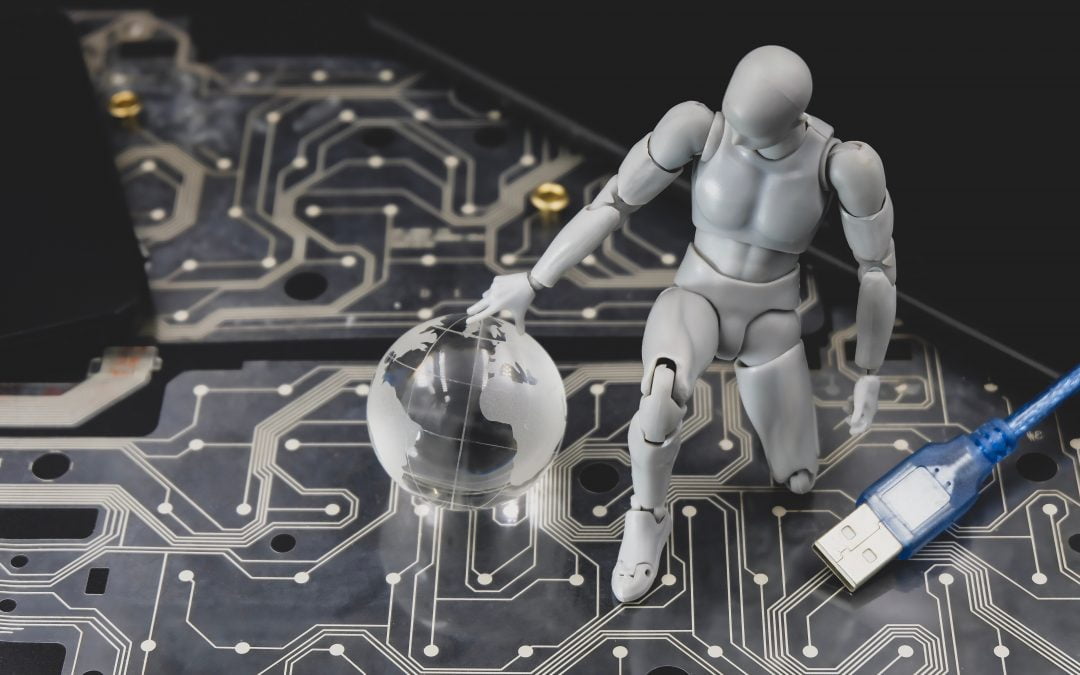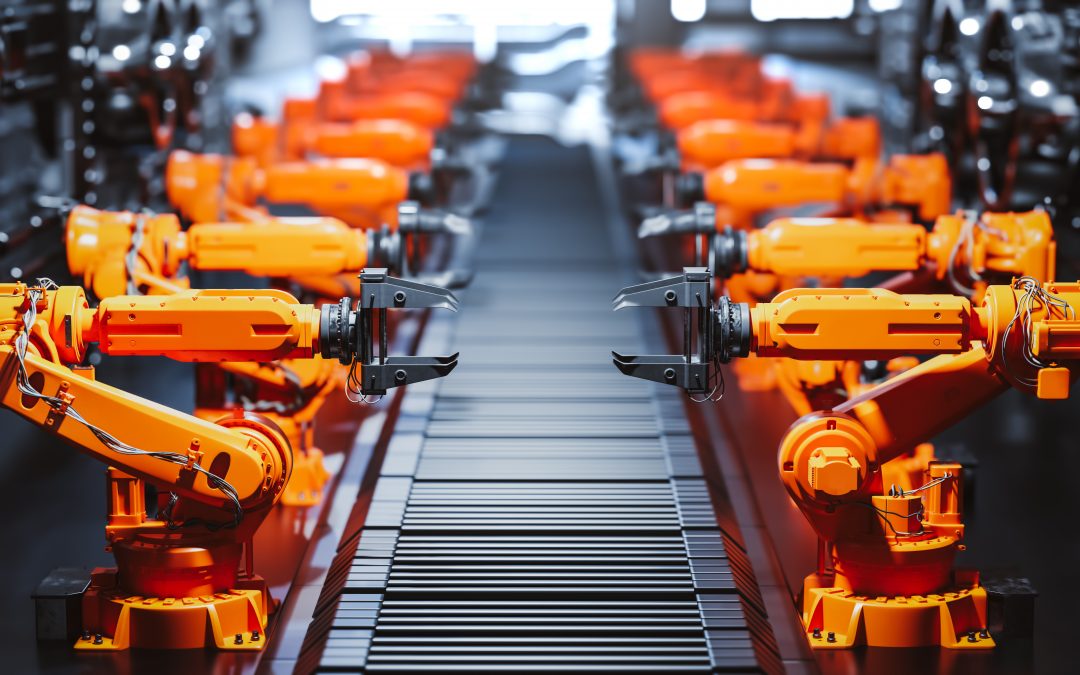
10 Robotics Trends for 2023 Part 2
Robotics is frequently assumed to be something found solely in science fiction literature. However, in the near future, we will witness a significant increase in the usage of robots in a variety of industries. This will take the shape of robots in offices, households, and medical settings. From self-driving vehicles to Amazon’s strange effort to sell food to the public via robots, robotics is transforming the way we think. In this article, we will look at part 2 of the 10 robotics trends that will have an influence on the corporate sector in 2023. You can find part 1 here.
6. Education Robotics
Robotics has transformed the way education is presented and experienced, and educators all around the world have embraced it. Education robotics is a topic of research that focuses on the use of robots to enhance learning experiences. They assist students in developing a knowledge of science, technology, engineering, and math (STEM) ideas. Robotics may be used to teach a number of topics in an interactive manner. So making learning more enjoyable for students of all ages.
One of the most apparent benefits of education robotics is that it allows students to interact more meaningfully with tangible robotic devices than traditional techniques. This allows students to explore topics and practice abilities in a setting where they can receive quick feedback from their robot professors. Students acquire confidence and problem-solving abilities as they get more comfortable working with robots. This is necessary for success in STEM disciplines.
Robotics also allows for the introduction of coding into the classroom. Coding is a necessary ability for anybody interested in a STEM career, but it may be scary for many kids. Coding is presented in a pleasant way in robotics, allowing children to acquire computational thinking without fear of failure or frustration. Students may learn the fundamentals of coding while also honing their problem-solving abilities through robotics.
Create interactive learning experiences
Robotics, in addition to delivering educational benefits, aids in increasing student involvement in the classroom. Robots can make classroom activities more engaging for everyone involved by generating interactive learning experiences that are both enjoyable and educational. This keeps pupils focused on their work and keeps them interested throughout their courses.
Finally, education robotics provides several potential for student-teacher cooperation. Robots can be used by teachers as instruments for group activities or team-building exercises that require students to collaborate toward a shared objective. This encourages collaborative skills while also giving students opportunity to take on leadership positions when working on projects with others.
Overall, educational robotics is a fantastic tool for teachers to engage their students in meaningful learning experiences while also preparing them for life beyond school. Educators may encourage their pupils to become lifelong learners and innovative problem solvers who are well-prepared for success in STEM areas by incorporating robotics into the classroom.
7. Consumer Robotics
For decades, robotics has been an essential element of contemporary life, and the consumer market has experienced a continuous increase in the number of robotic devices accessible. Robots built for personal and household usage, such as vacuuming, mowing, cleaning, security, and even entertainment, are referred to as consumer robotics. These robots are growing more intelligent and are quickly becoming a part of everyday life.
In the near future, consumer robots is predicted to grow into a multibillion-dollar industry. Robotics firms are always inventing new technologies to make their devices smarter, quicker, and more inexpensive. Many firms are developing their own customized robots for specific activities such as cleaning or home security to suit the rising demand for consumer robots.
Robotics technology has enabled robots to perform jobs that previously required human labor. Robotic vacuums, for example, can maneuver past obstacles and clean a room without the need for human participation. Similarly, robotic mowers may be trained to automatically mow a lawn while avoiding obstacles such as trees and other plants. Intruders can be detected by robotic security systems, and homeowners can be warned of any possible threat.
Benefits of Robotics
Some of the advantages of consumer robots are obvious: they can save time and energy by doing boring tasks without human intervention. Furthermore, because of their precision and accuracy, robots can perform many tasks better than humans. Robots also improve safety by eliminating the need for potentially hazardous tasks like climbing ladders or operating in hazardous places.
Consumer robotics is becoming more affordable as prices fall and technology develops. As they grow more inexpensive, they will become as commonplace as smartphones and laptops. Most families will most certainly have at least one robot that assists with various duties and activities around the house in the near future.
8. Robotics at Home
Home robotics has grown in popularity in recent years as more people want to incorporate technology into their daily lives. Robots are utilized to automate jobs, improve safety and security, offer entertainment, and even assist with household duties. They may be an important addition to your house, whether you’re wanting to save time or simply make it more efficient.
Robots can assist in making life simpler by performing tiresome jobs such as cleaning or wiping floors. There are various types of robots available to do similar jobs. Many robot vacuums and mops have sensors that assist them in navigating around obstacles and furniture, and some even include specialized cleaning routines for various surfaces. These robots may be programmed to clean at specific intervals, or you can control them with your voice using voice assistant technology.
When it comes to home security, robots may also give an enhanced degree of security. A variety of robotic home surveillance systems may be set up to monitor activities in the home. To identify prospective attackers, these systems include motion detectors, video cameras, and even facial recognition software. They may also be configured to inform authorities in the event of an emergency, making them an excellent tool to protect your family.
Enjoy entertainment
Robots may also be utilized in the home to give amusement. For example, there are robotic toys that move and interact with children in real time. They are assisting them in engaging in educational tasks while having fun. There are other robots that may be trained to play board games or board game-like activities, as well as robots that are particularly created for gaming purposes.
Finally, robots can be utilized for mundane tasks such as garbage collection and laundry folding. These robots are typically outfitted with sensors that allow them to observe their surroundings and behave accordingly without the need for human involvement. All of these characteristics make them ideal for busy homes that don’t have time for monotonous duties but yet want to keep their home clean and tidy.
Overall, home robotics is growing more popular due to its capacity to automate jobs, improve safety and security, provide entertainment, and assist with daily chores. Robots may be the ideal answer for you if you want to save time or just make living around the house easier and more efficient.
9. Robotics at the Restaurant
In the restaurant sector, robotics is quickly becoming a prominent trend. Restaurants are increasingly recognizing the potential of robotic technology to improve the efficiency and cost-effectiveness of their operations. Robots are increasingly becoming a vital element of restaurant operations, from robot servers to automated meal prep and delivery.
The most popular type of robotics in restaurants are robot servers. These robots are programmed to accept orders, serve clients, and even converse with them. Some robot servers, for example, can answer basic queries about menu items and accept customer orders. They can also be designed to detect distinct customer orders in order to assure meal accuracy and efficiency.
Robots can also help with meal preparation activities like slicing vegetables and stirring sauces. Some restaurants have already installed robotic arms for such jobs, removing the need for human labor in some sections of food preparation. This allows employees to focus on more difficult duties while also reducing food waste caused by human mistake.
Automated food delivery
Another application of robotics that some restaurants use is automated delivery. Food may be delivered quickly to clients’ homes or offices using drones or self-driving cars. Customers no longer have to wait in line for their orders, which boosts efficiency and consumer happiness.
Finally, robots can be utilized in restaurants to do cleaning activities such as washing floors and disinfecting tables and surfaces. This reduces the possibility of cross-contamination while also keeping eating spaces clean and safe for clients.
Overall, robotics is revolutionizing the restaurant industry by increasing operational efficiency and streamlining processes. Robots are quickly becoming an essential part of a successful restaurant operation, providing increased safety, accuracy, speed, and customer satisfaction at a reduced cost.
10. Robotics at the Hotel
Robotics is gaining popularity in the hotel business. Hotels are now implementing robotic technology to improve service and convenience for their customers. Robotics is changing the way hotels run and engage with their clients, from self-check-in kiosks to room service robots.
Hotel self-check-in kiosks are becoming more widespread. Using these kiosks, visitors may check in without ever communicating with an agent or waiting in line at the front desk. Guests may submit their information using their credit cards or phones, print their keys, and be on their way. This technology expedites the check-in process while lowering the hotel’s human labor expenditures.
Robotics is also being employed in the delivery of room service. Many hotels are already deploying robots to bring amenities like snacks and beverages to guest rooms. This saves time and money by eliminating the need for a human staffer to take goods from the kitchen or bar to each guest’s room.
Housekeeping with robots
Robotics is also being deployed in hotel housekeeping operations. Robots are being used to clean rooms faster and more efficiently than humans, freeing up people for other chores like refilling amenities and serving visitors with their requests.
Furthermore, many hotels are also employing robotic concierges that can provide information on nearby sights, restaurants, and other places of interest. These robots can even provide guests who are unfamiliar with the region instructions and advice.
Robotics has transformed the way hotels function, enabling them to deliver greater service while lowering labor expenses. With additional robotic advances on the way, it appears that robots will continue to have a significant influence on the hospitality sector in the coming years. This trend is projected to continue in 2023 as hotels explore innovative methods to give an enhanced experience for their guests with robotic technology that may automate monotonous duties such as cleaning or doing maintenance inspections around the hotel premises.

